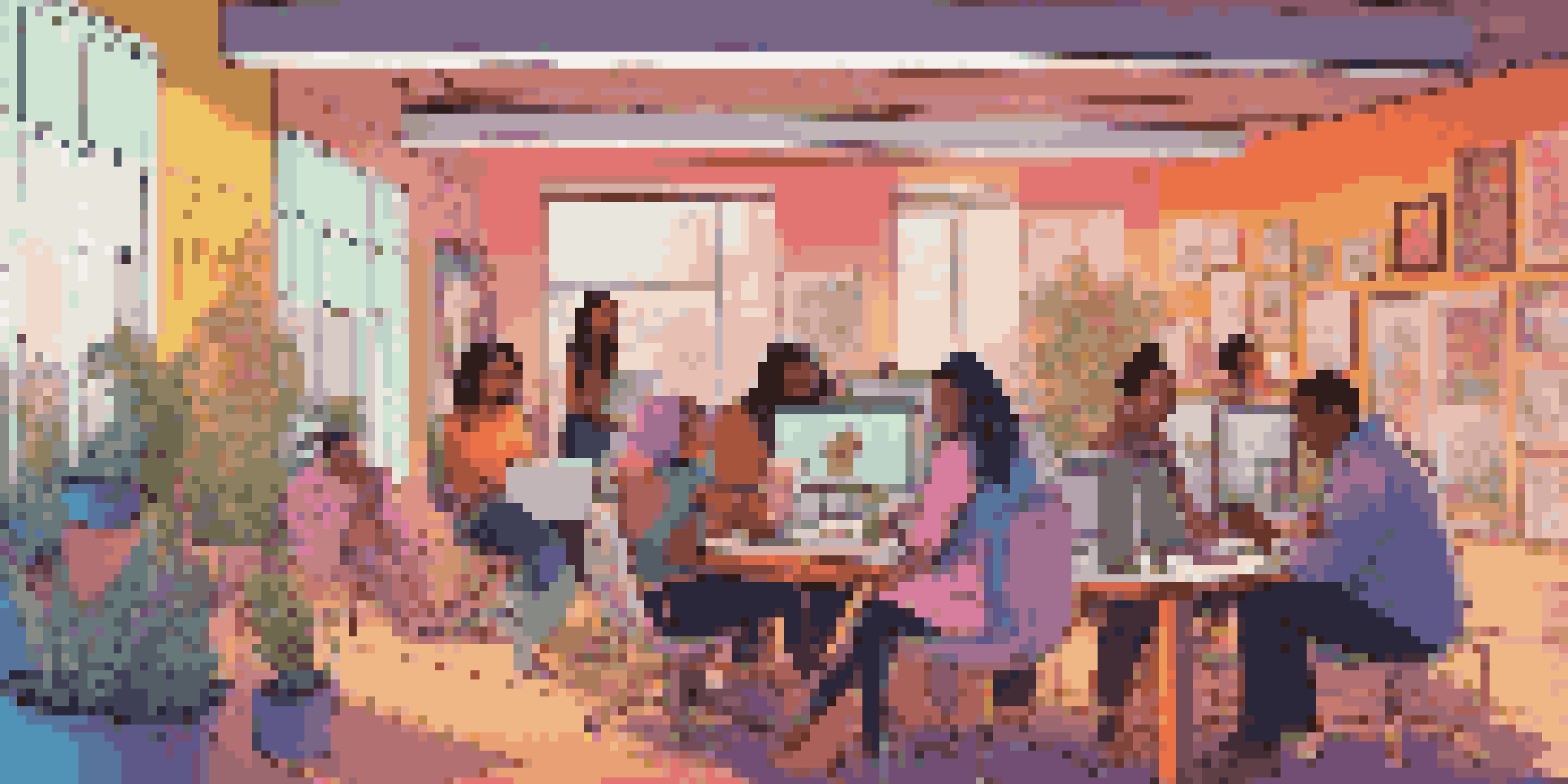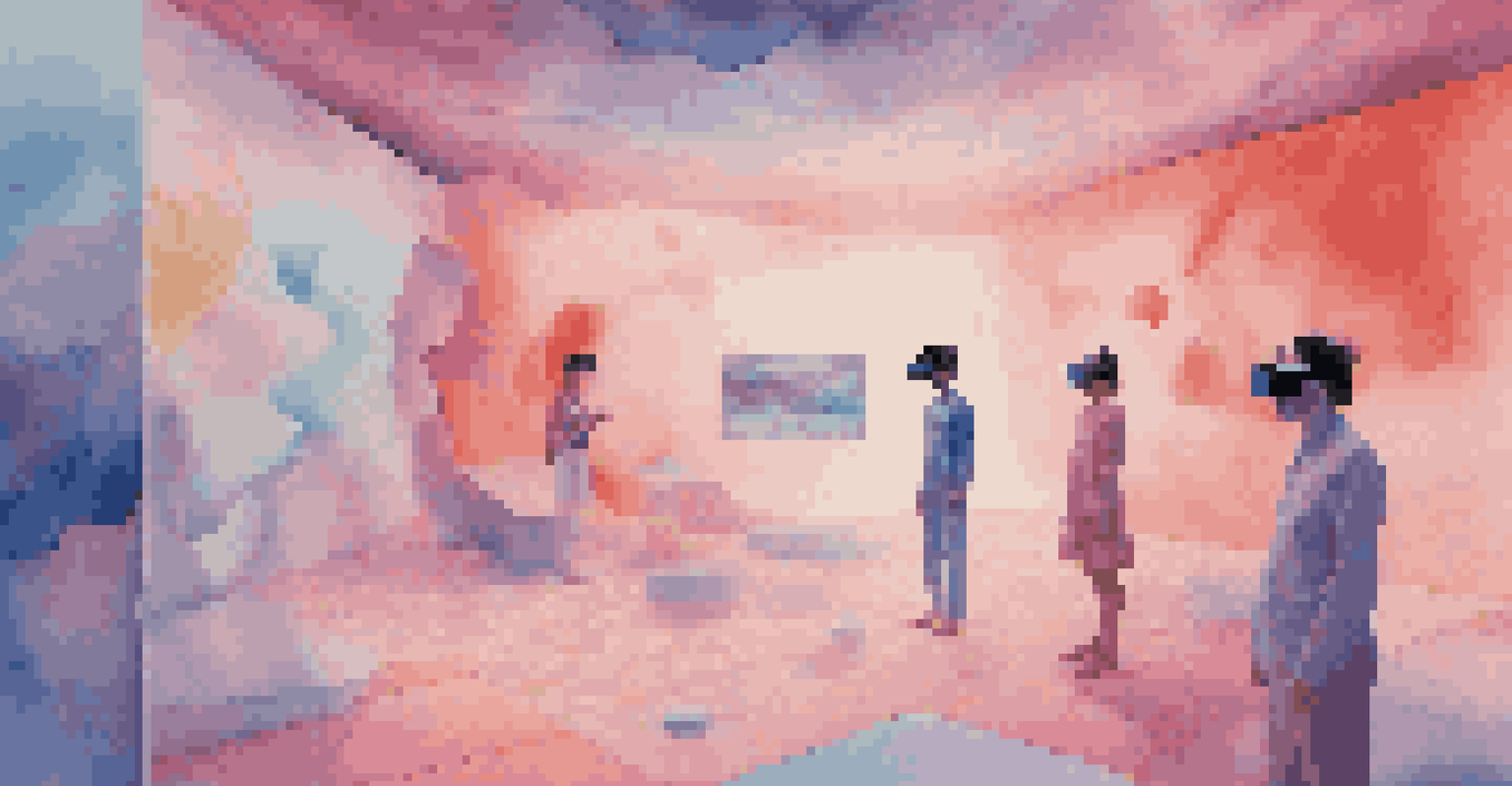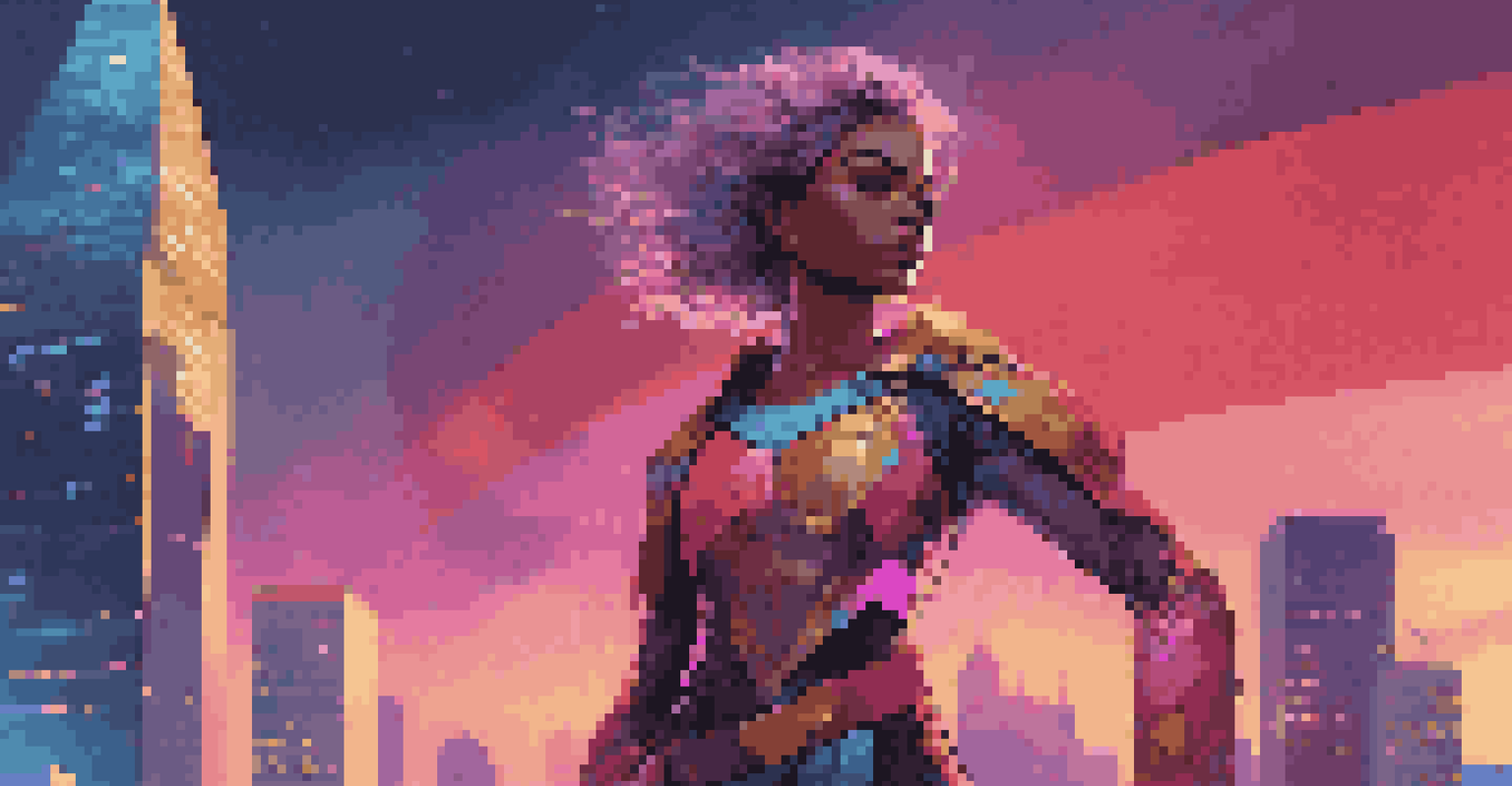Art and Gender in the Age of Digital Media

The Evolution of Art in the Digital Age
Art has undergone a remarkable transformation with the advent of digital media. Traditional forms like painting and sculpture have expanded to include digital illustrations, animations, and virtual reality experiences. This evolution not only changes how art is created but also how it is consumed, making it more accessible to a global audience. One can argue that the digital age democratizes art, allowing more voices to emerge, particularly those historically marginalized.
The role of the artist is to make the revolution irresistible.
Digital platforms enable artists to showcase their work without the constraints of galleries or exhibitions. Social media has become a powerful tool for sharing art, allowing artists to connect directly with their audience. This shift has encouraged diverse expressions of identity and experience, especially among women and non-binary artists who often face barriers in traditional art spaces. As a result, we see a rich tapestry of perspectives that reflect a broader range of human experience.
Moreover, technology has given rise to new artistic forms that challenge conventional notions of gender and identity. Artists can create immersive experiences that invite viewers to engage with gender in innovative ways, prompting conversations about sexuality, feminism, and gender fluidity. This intersection of technology and art not only enriches the art itself but also fosters a deeper understanding of complex gender dynamics in contemporary society.
Representation of Gender in Digital Art
The representation of gender in digital art is both a reflection and a critique of societal norms. Many digital artists use their platforms to challenge stereotypes and present alternative narratives surrounding gender. For example, video games and online animations often portray female characters in limited roles; however, some artists are subverting these expectations by creating strong, multifaceted characters that defy traditional gender roles.

In addition to character representation, digital art also explores gender as a fluid concept. Artists are increasingly depicting gender in ways that transcend the binary understanding of male and female. This can be seen in works that embrace and celebrate gender nonconformity, highlighting the spectrum of identities. Such representations not only validate the experiences of non-binary individuals but also encourage viewers to rethink their own perceptions of gender.
Digital Art Democratizes Expression
The rise of digital platforms allows diverse artists, particularly those from marginalized communities, to showcase their work and connect directly with global audiences.
Furthermore, the digital space allows for collaborative projects that amplify diverse voices. Initiatives like online exhibitions and digital zines focus on female and LGBTQ+ artists, fostering community and solidarity. By creating spaces for underrepresented groups, digital art challenges the status quo and invites dialogue about gender inclusivity, leading to a more equitable art world.
Feminism and Digital Media: A New Frontier
Feminism has found a vibrant new platform in digital media, allowing artists to explore themes of gender, equality, and empowerment in innovative ways. Digital art can serve as a form of activism, using visuals and narratives to call attention to issues like gender-based violence and systemic inequality. This intersection of art and activism has sparked movements that resonate with a global audience, encouraging solidarity and action.
Art is not a mirror to hold up to society, but a hammer with which to shape it.
Moreover, digital platforms enable feminist artists to share their stories and experiences in a way that traditional media may not allow. Through blogs, vlogs, and social media, these artists can reach a wide audience, dismantling barriers that have historically silenced women's voices in the art world. This direct engagement fosters community, empowering others to express their own experiences and advocate for change.
In essence, the digital realm provides a space for feminist discourses to flourish. Artists can engage with their audience in real time, facilitating discussions around gender equality and social justice. By harnessing the power of digital media, feminist artists are not just creating art; they are cultivating a movement that challenges and redefines what it means to be a woman in today's society.
Exploring Masculinity in Digital Art
While much attention is given to the representation of women, the portrayal of masculinity in digital art is equally important. Contemporary artists are reexamining traditional depictions of masculinity, often critiquing the rigid standards imposed on men. Digital media allows for a nuanced exploration of male identity, emphasizing vulnerability and emotional expression, which can be refreshing in a culture that often stigmatizes these traits.
For instance, video games have started to feature male characters who exhibit traits traditionally associated with femininity, such as empathy and nurturing. This shift challenges the hyper-masculine archetype and opens up conversations about what it means to be a man in today's world. Such representations can help dismantle toxic masculinity, promoting healthier understandings of male identity.
Gender Fluidity in Digital Art
Digital art increasingly explores gender as a spectrum, challenging traditional binaries and validating the experiences of non-binary individuals.
Additionally, digital platforms provide a space for male artists to discuss their experiences with masculinity candidly. By sharing personal narratives and artistic expressions, these artists can engage in meaningful dialogues about societal expectations and pressures. This exploration not only enriches the discourse around gender but also fosters a culture of acceptance and understanding.
Intersectionality in Digital Art
Intersectionality is a crucial lens through which we can understand art and gender, particularly in the digital space. This concept acknowledges that individuals experience multiple identities—such as race, gender, sexuality, and class—that intersect and shape their experiences. Digital artists are increasingly weaving these complexities into their work, providing a richer, more holistic view of identity.
For example, an artist may explore the challenges faced by a Black woman in a digital piece, highlighting the unique struggles that arise from the intersection of race and gender. By showcasing these layered experiences, artists can foster empathy and understanding among viewers who may not share the same identity. This approach encourages a more inclusive dialogue about art and the diverse experiences it represents.
Moreover, digital platforms allow for collaboration across different identities and communities, amplifying voices that may otherwise go unheard. Initiatives that focus on intersectional representation encourage artists from various backgrounds to share their stories, creating a tapestry of narratives that reflect the complexity of contemporary society. This celebration of diversity not only enriches the art community but also challenges the dominant narratives that often marginalize certain groups.
The Impact of Social Media on Artistic Gender Narratives
Social media has revolutionized how art is created, shared, and discussed, particularly regarding gender narratives. Platforms like Instagram and TikTok allow artists to showcase their work in real-time, fostering immediate interactions with their audience. This rapid feedback loop can be empowering, giving artists the confidence to explore and express gender-related themes more boldly.
Moreover, social media serves as a space for community building among artists, especially those focused on gender issues. Through hashtags and online movements, artists can connect with like-minded individuals, creating support networks that encourage collaboration and dialogue. These interactions can lead to new artistic projects that challenge existing norms and push boundaries in meaningful ways.
Social Media Fuels Artistic Dialogue
Social media revolutionizes how artists engage with gender narratives, fostering community and collaboration while also presenting challenges related to visibility and commodification.
However, the impact of social media is not without its challenges. Artists must navigate the pressures of online visibility and engagement, which can sometimes lead to a commodification of their work. Balancing authenticity with the desire for recognition can be tricky, especially for those addressing sensitive gender topics. Nonetheless, the potential for social media to amplify diverse voices remains a powerful tool for change in the art world.
Future Directions: Art and Gender in a Digital World
As we look to the future, the interplay between art, gender, and digital media is bound to evolve further. With advancements in technology, such as artificial intelligence and virtual reality, artists will have even more tools at their disposal to explore gender narratives. This opens up exciting possibilities for immersive experiences that challenge viewers' perceptions and invite them to engage with gender in new, thought-provoking ways.
Moreover, as conversations around gender continue to broaden, we can expect more inclusive representations in digital art. The demand for diverse voices and experiences will likely shape the next wave of artistic expression, pushing boundaries and challenging traditional narratives. This evolution will not only enrich the art world but also foster a deeper understanding of gender in our society.

Ultimately, the future of art and gender in the digital age is about collaboration, inclusivity, and innovation. As artists continue to engage with these themes, they will inspire future generations to rethink gender norms and advocate for a more equitable world. The potential for art to facilitate change is immense, and as technology continues to advance, so too will the conversations surrounding gender and identity.